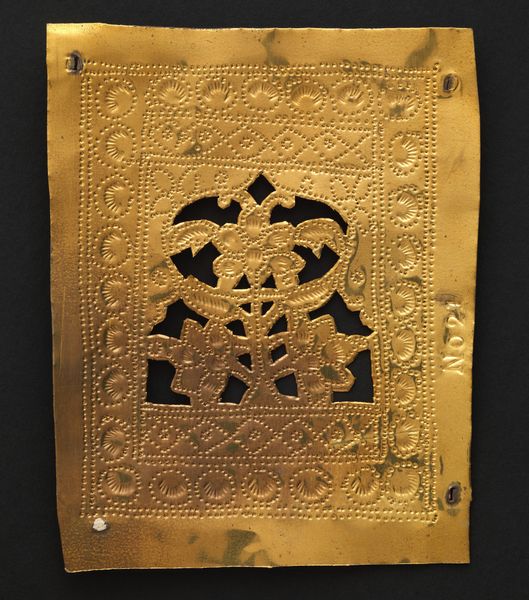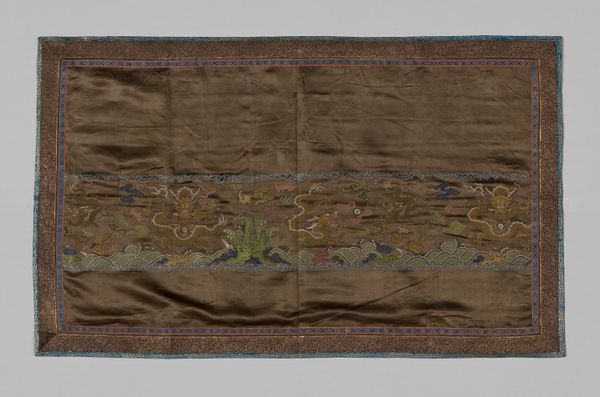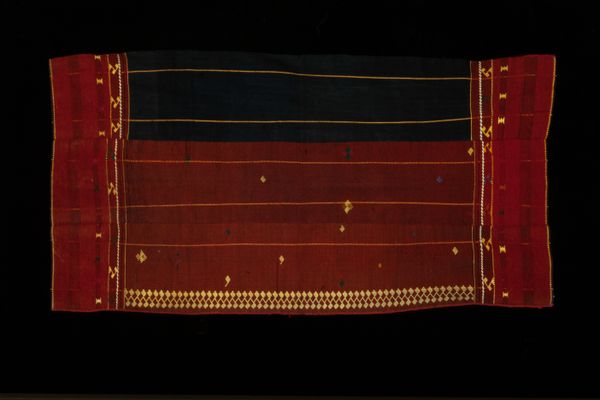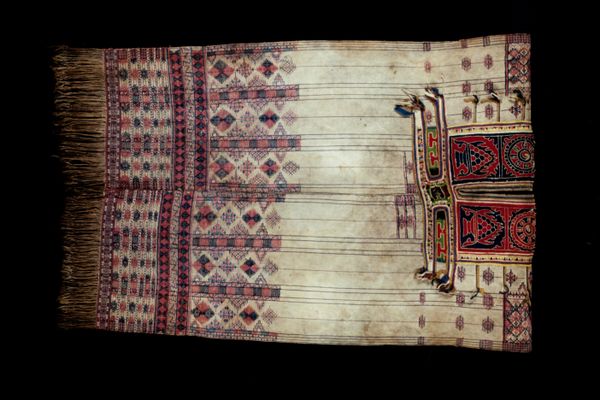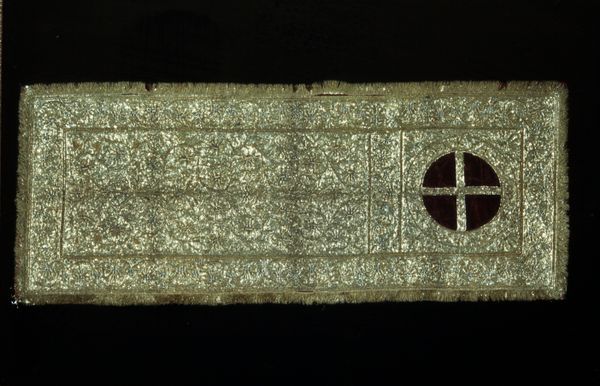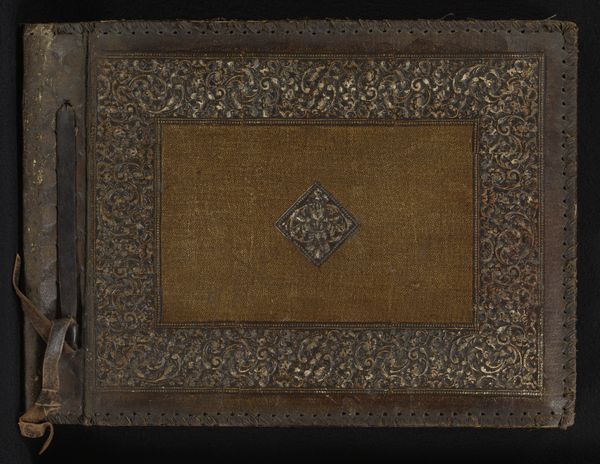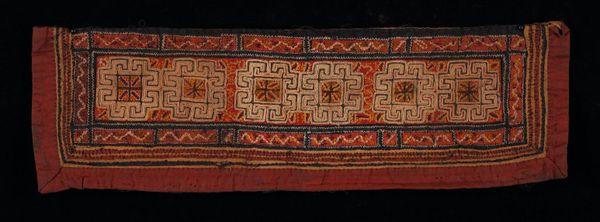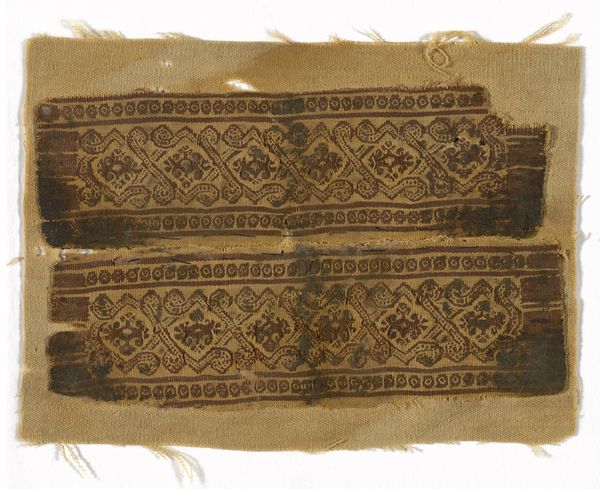
painting, paper, ink
#
medieval
#
narrative-art
#
painting
#
pattern
#
book
#
detailed texture
#
asian-art
#
paper
#
ink
#
geometric
#
miniature
Dimensions: 4 5/8 x 26 1/16 x 8 3/4 in. (11.75 x 66.2 x 22.23 cm) (overall, closed)
Copyright: Public Domain
This is an illuminated manuscript of "The Bhadrakalpika Sutra," crafted by an anonymous artist. The artwork is currently housed at the Minneapolis Institute of Art. Notice the careful orchestration of color and form, where the central dark plane acts as a grounding force. The black plane serves as a canvas for the stylized, golden script, which appears almost suspended. On either side of the central script, vibrant figures are framed within intricate, arched structures. These structures, rendered in warm reds and golds, create a visual echo, balancing the composition and creating a sense of unity and visual harmony. The use of symmetry reflects a deeper philosophical quest for balance, a theme that runs through Buddhist teachings. The visual language employed suggests not only a reverence for the text, but also a deliberate engagement with ideas about structure, order, and the transcendent nature of knowledge.
Comments
minneapolisinstituteofart almost 2 years ago
⋮
This sacred text, or sutra (literally translated as “thread”), consists of 297 rectangular, double-sided indigo-dyed pages, embellished with silver and gold script, and interspersed with over 600 miniature paintings. Such elaborate manuscripts were more worshipped as the embodiment of wisdom than actually read. It would have been wrapped in a silk cloth, protected by wooden book covers, and likely stored in the library, along with other offerings, at the Tsurpu Monastery in Tibet. This lavish commission is attributed to the time of Lama (teacher) Chodrak Gyatso (c. 1450–1506) of the Kagyupa order of Tibetan Buddhism. Founded in the 1100s, the Kagyupa order was one of four primary political and spiritual schools ruling Tibet. The manuscript lists the “1002 Buddhas of Our Fortunate Era,” including some of those of the Kagyupa order.
Join the conversation
Join millions of artists and users on Artera today and experience the ultimate creative platform.
